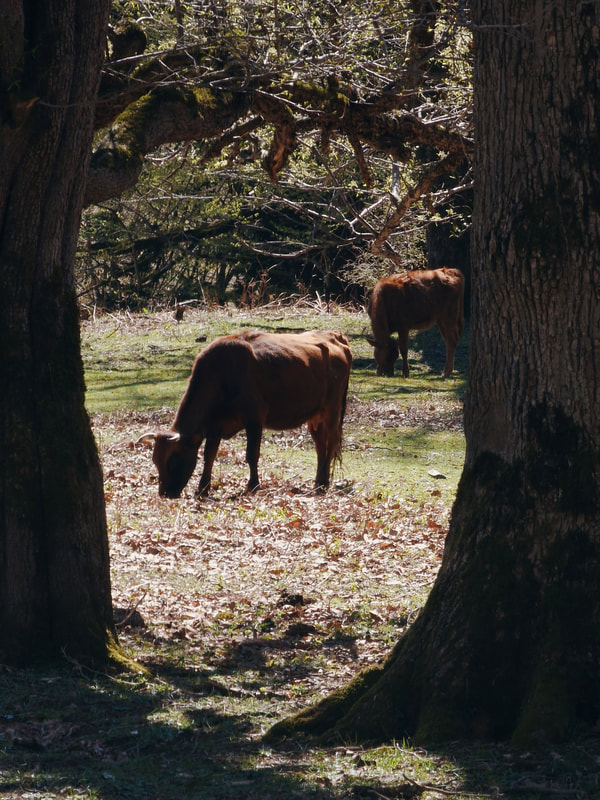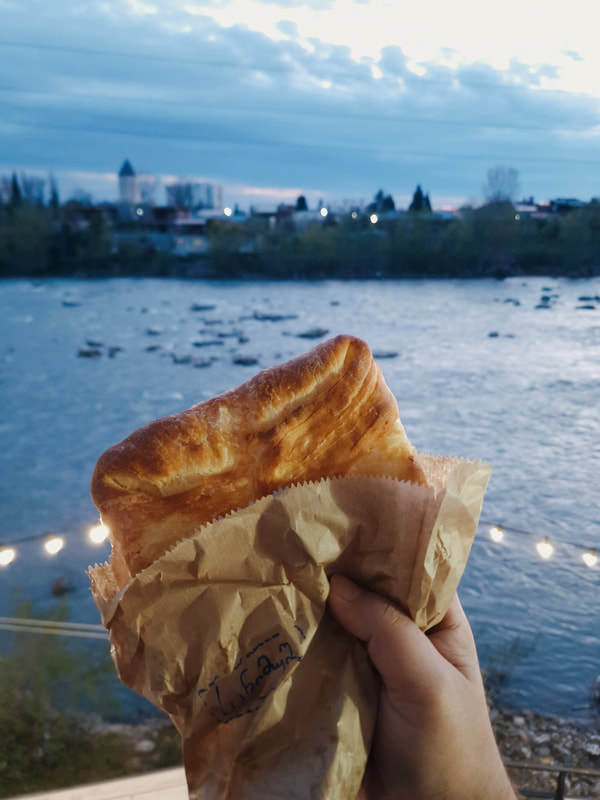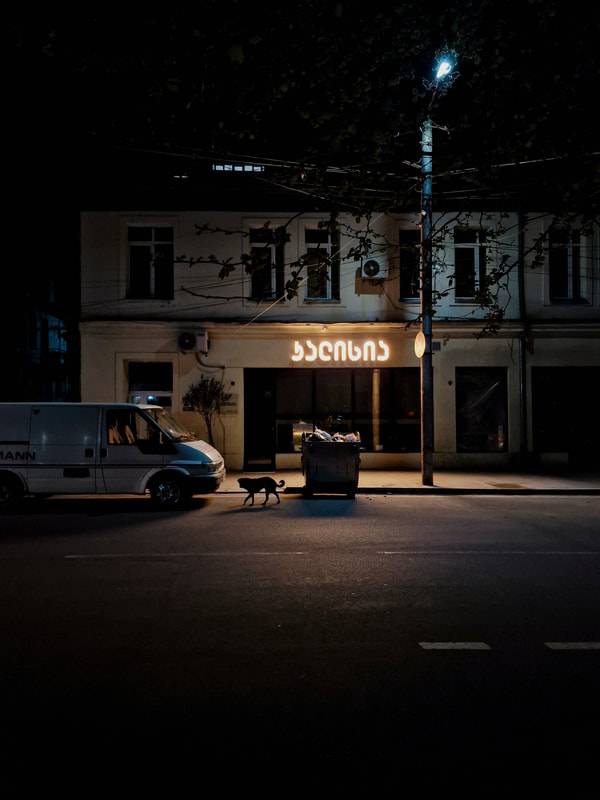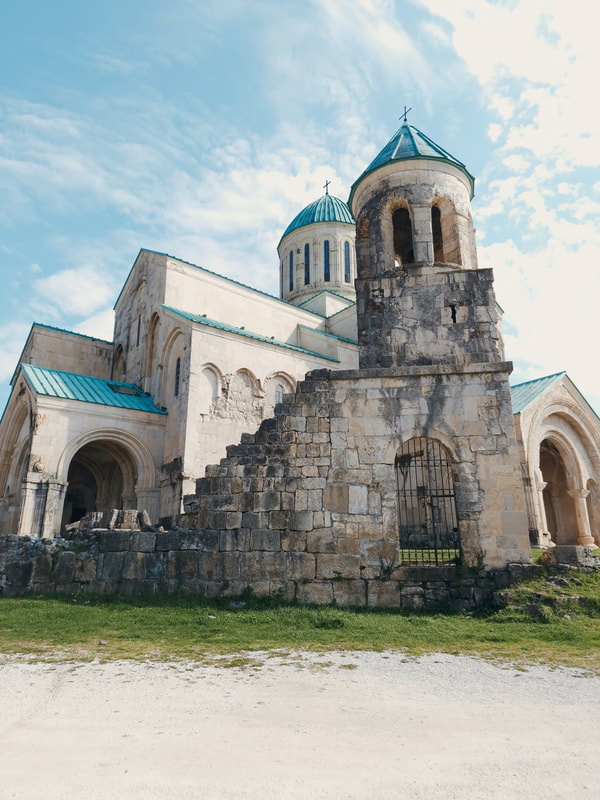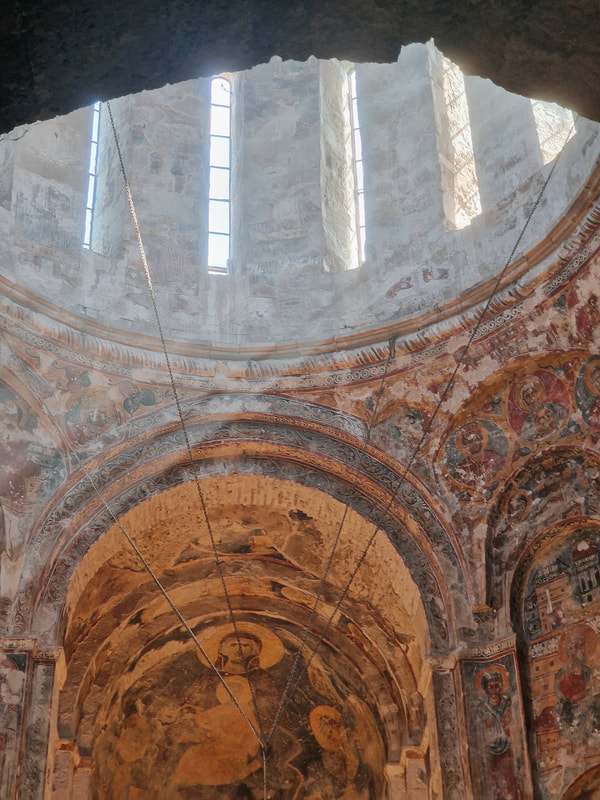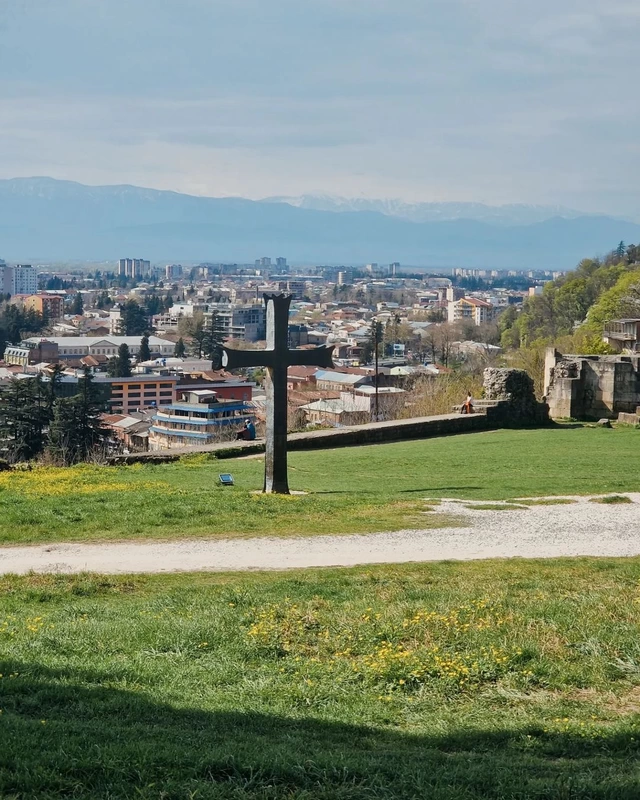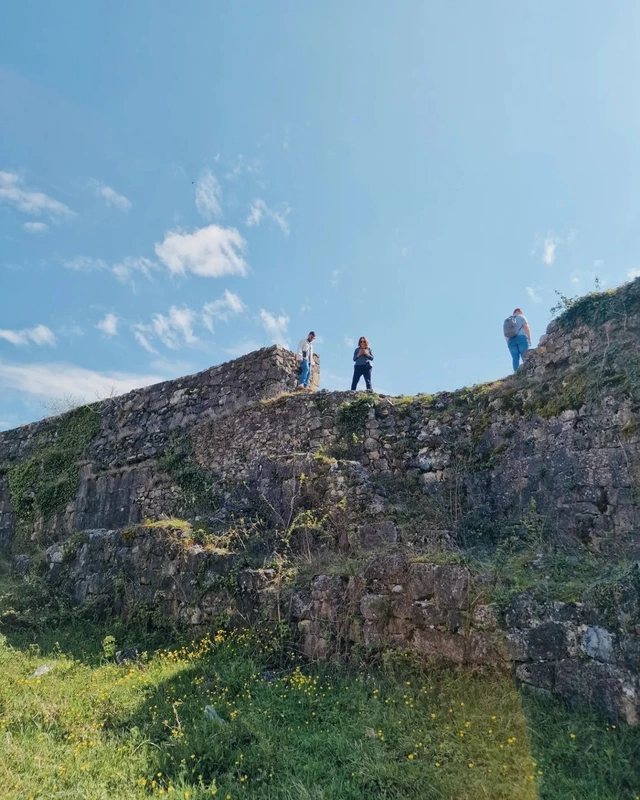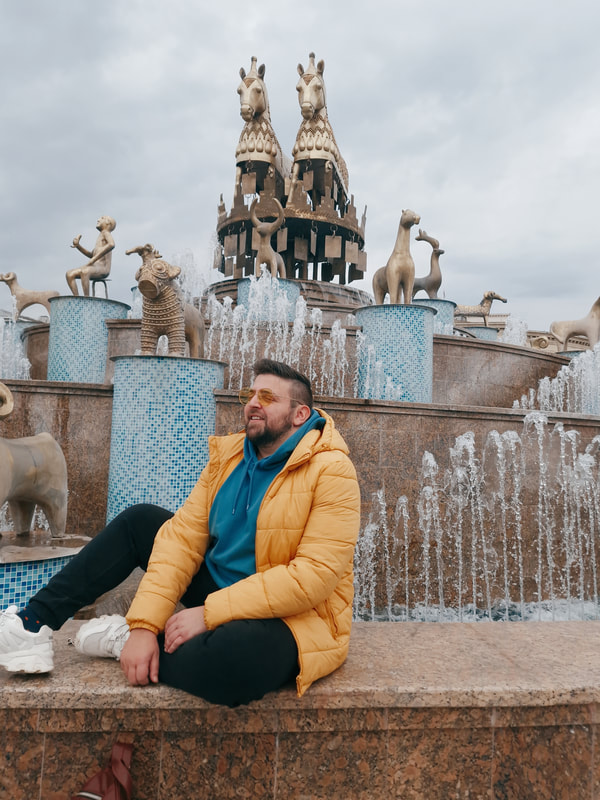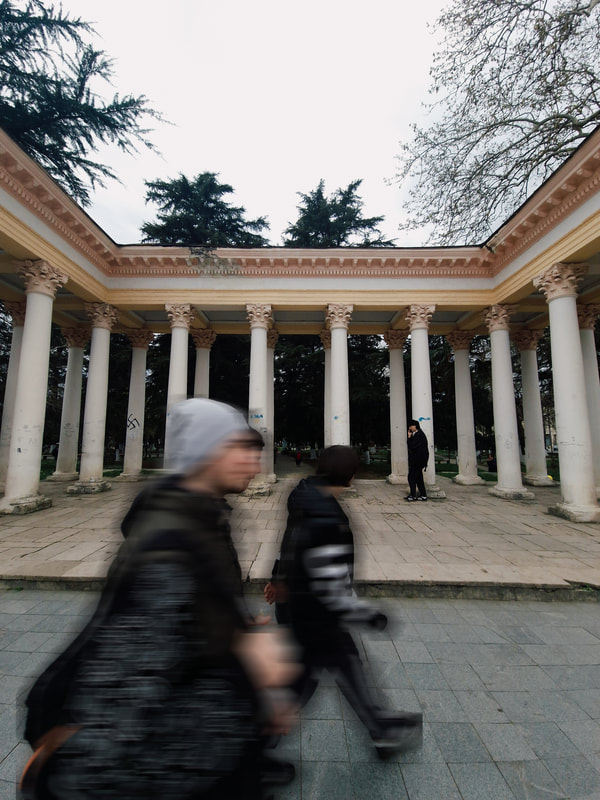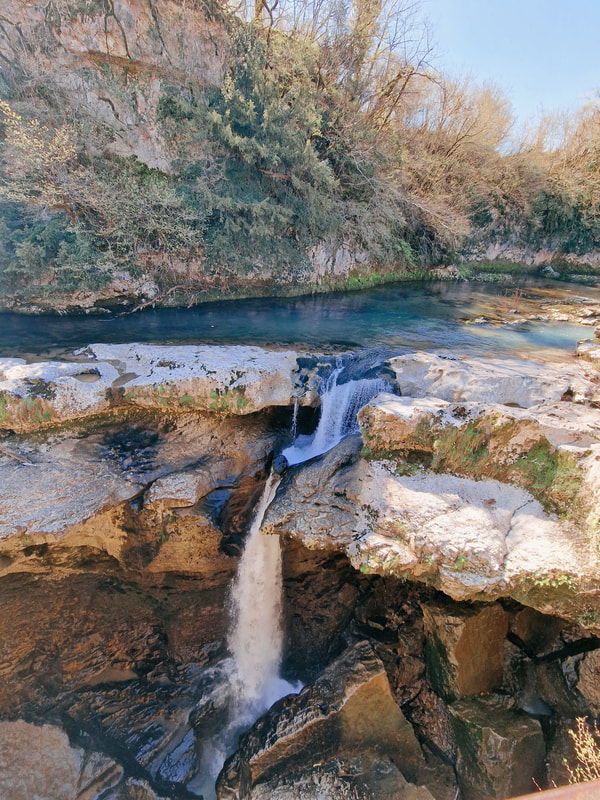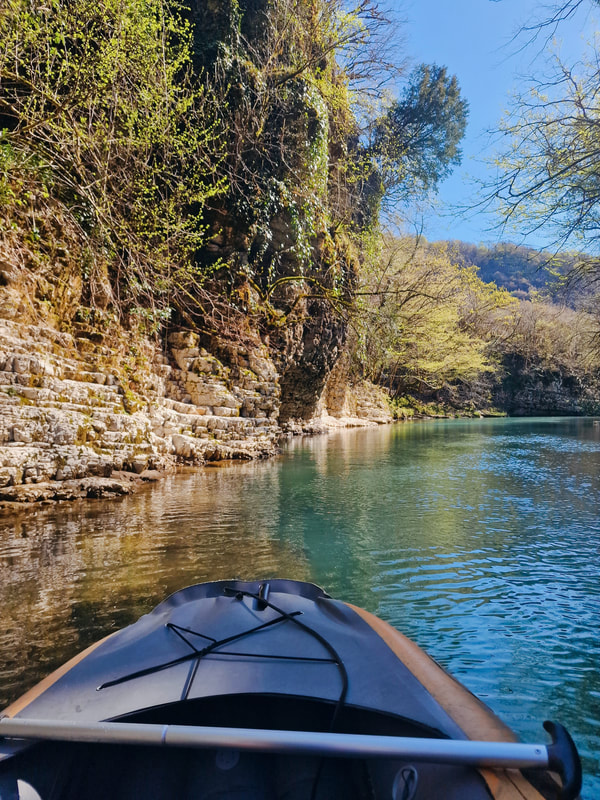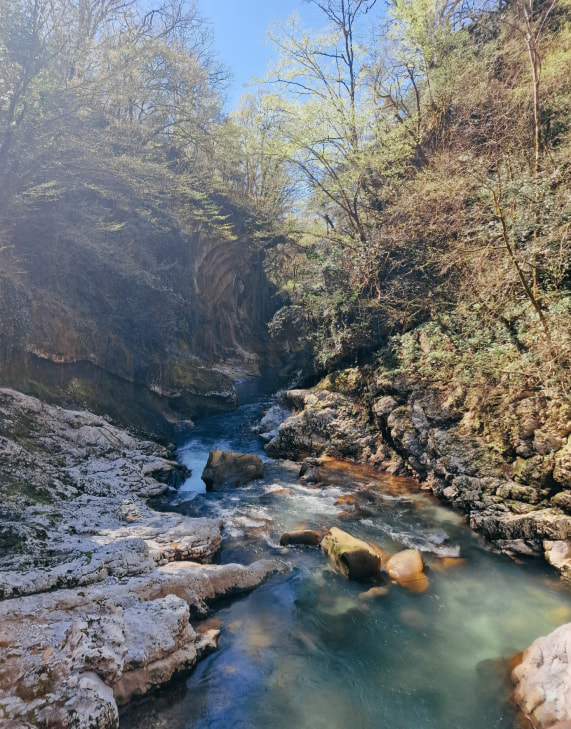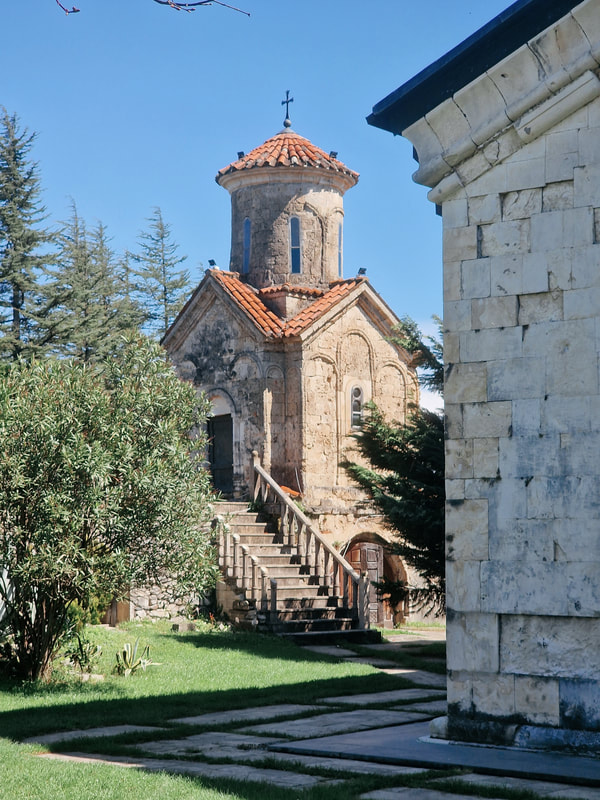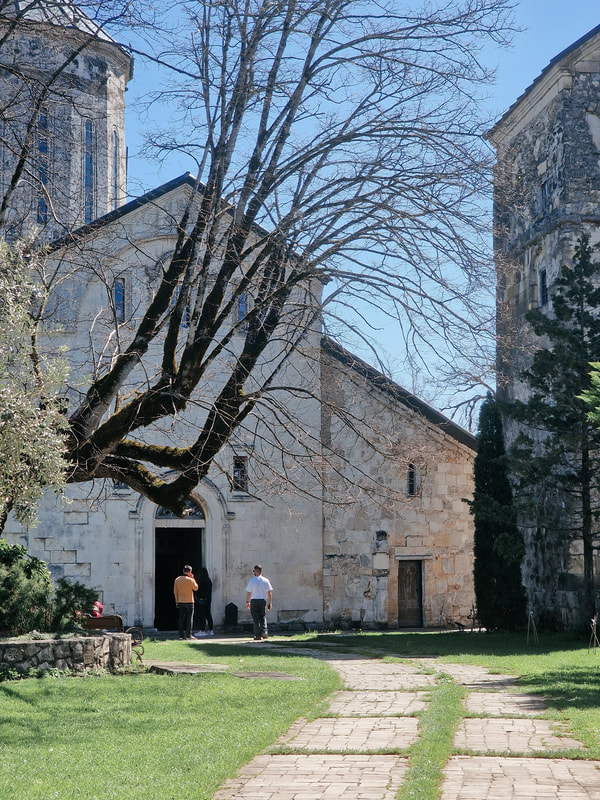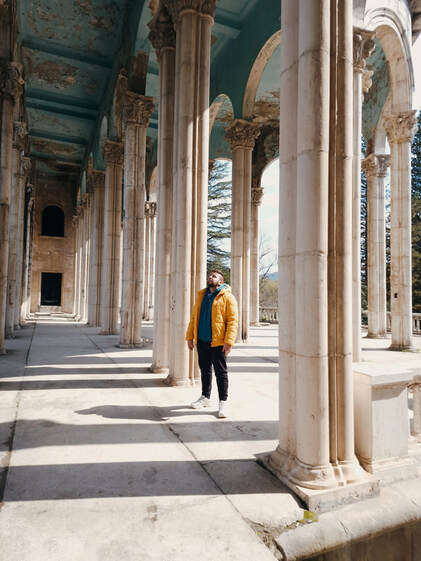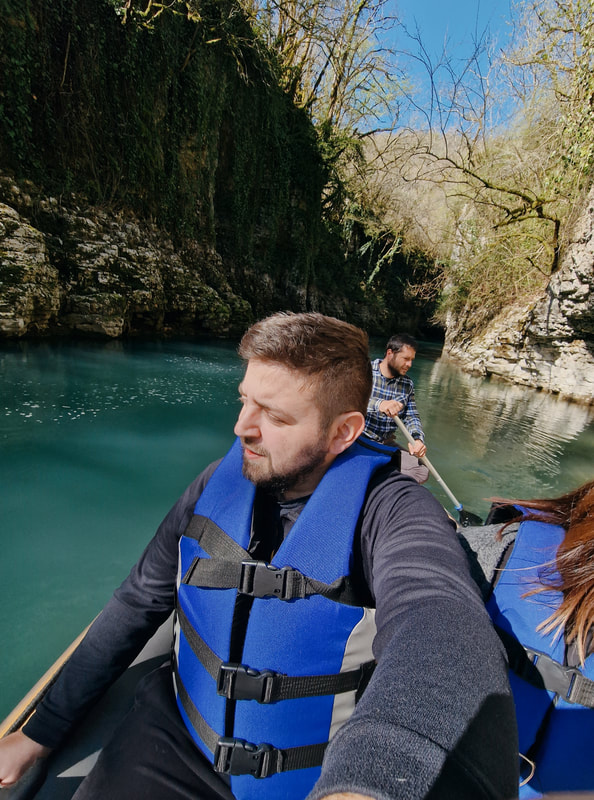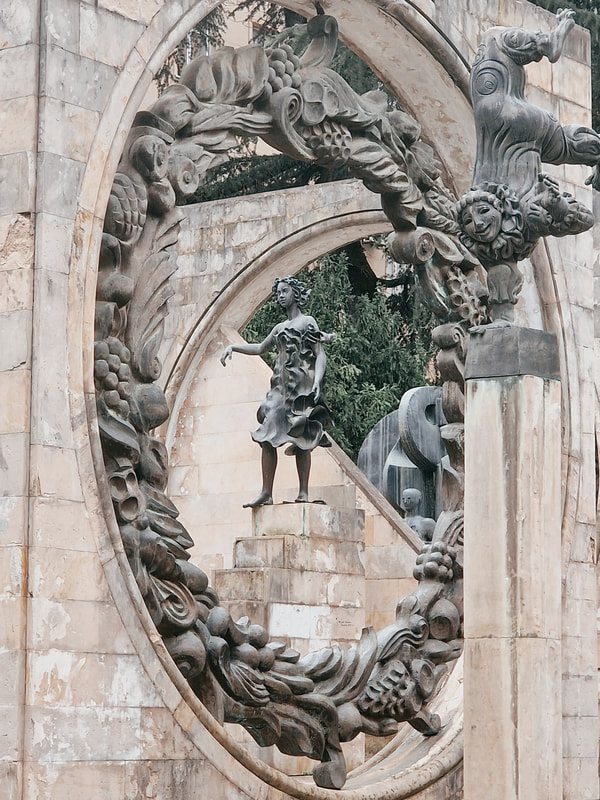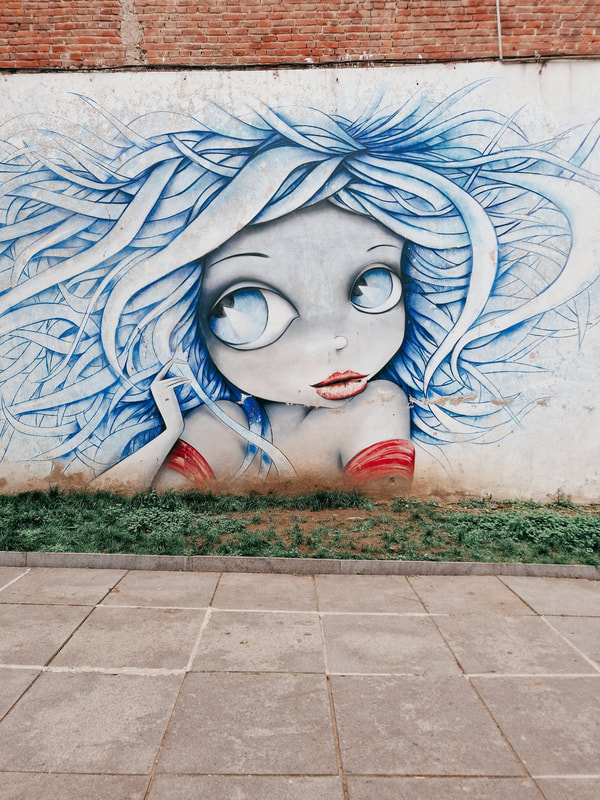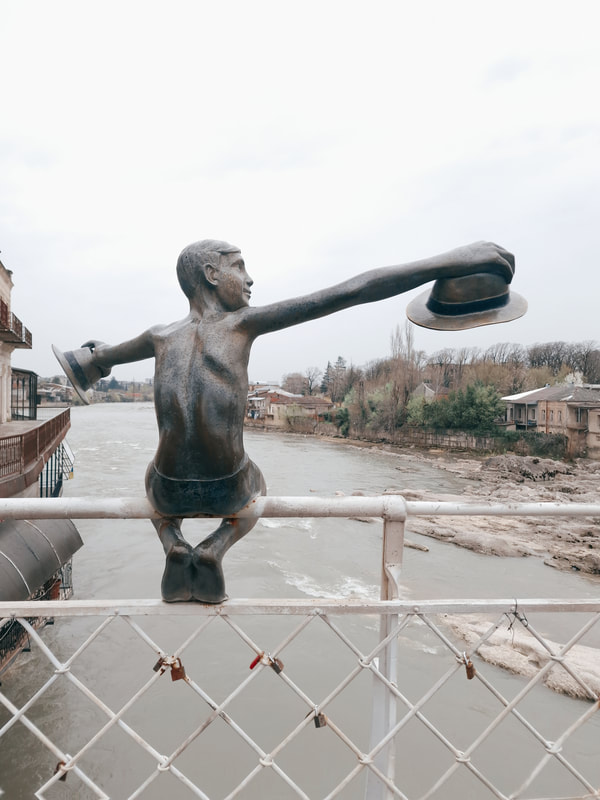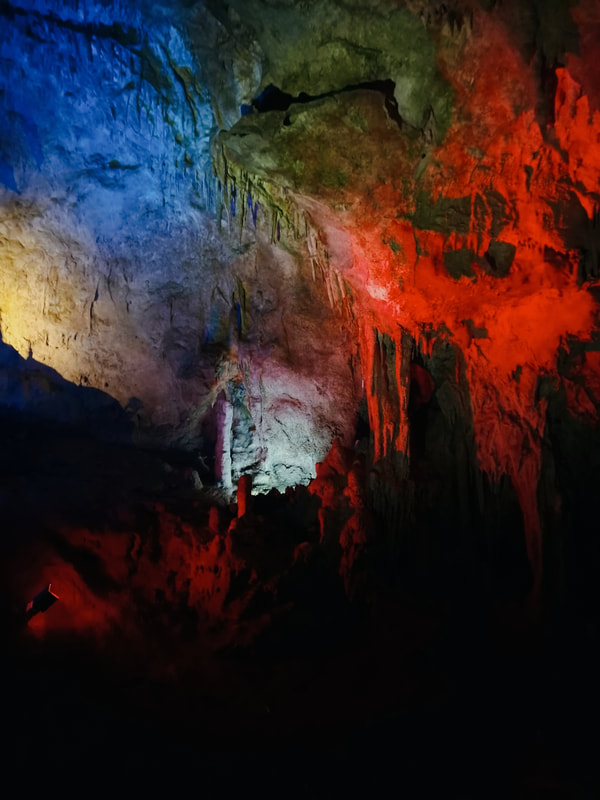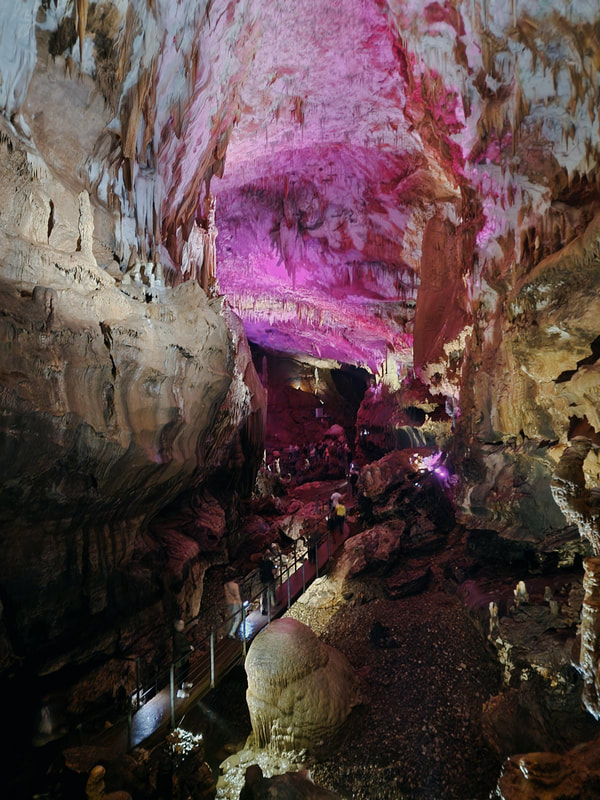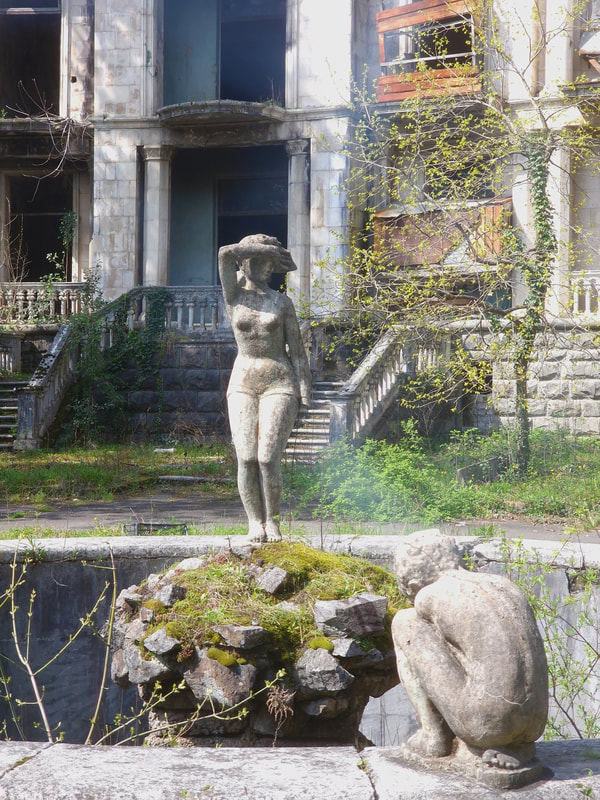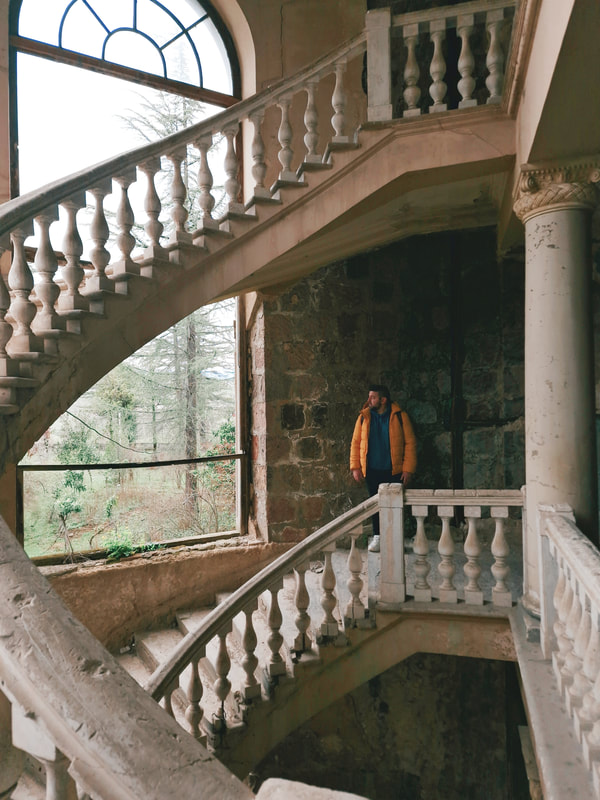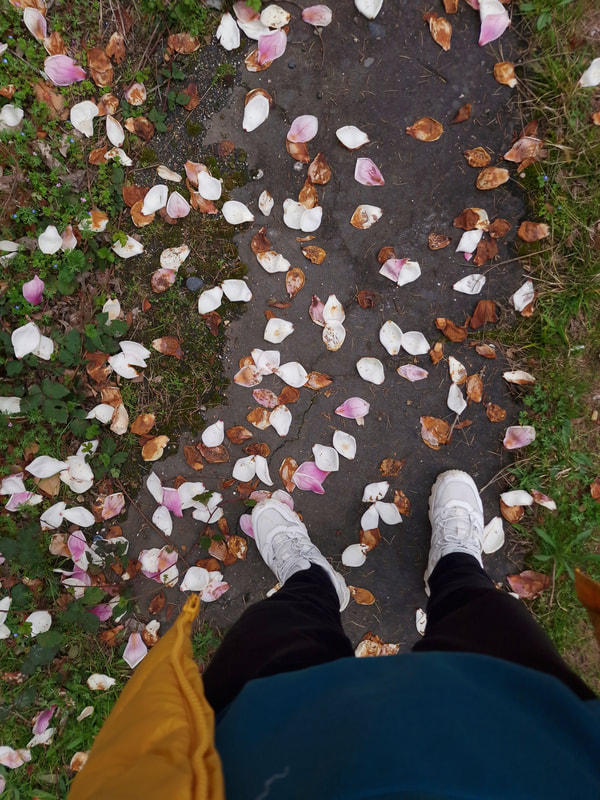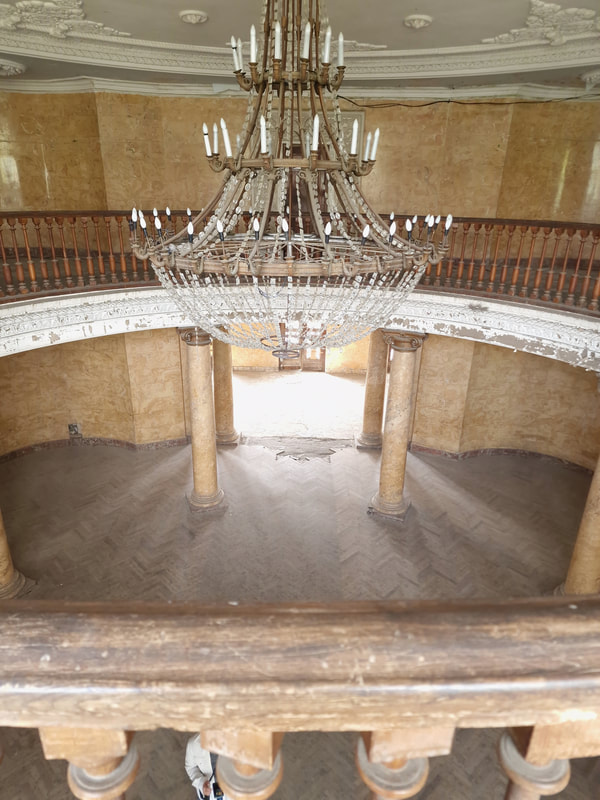
Let me be honest here, I was looking for a budget destination and Kutaisi was the perfect choice. I had no idea what to expect, and all the results from my search were suggesting to «take trips outside the city». That’s exactly what we did.
Kutaisi, in the Imereti region, is one of the oldest cities in the world and the third most populous city of Georgia. If you read Greek mythology, you may have heard of Kutaisi as the ancient Colchis, the final destination of Jason and the Argonauts (in the poem Argonautica). Also, Prometheus Cave in Tskaltubo are located at the foot of the hill where Prometheus was tied up as a punishment from the gods, but more on that below.
Kutaisi, in the Imereti region, is one of the oldest cities in the world and the third most populous city of Georgia. If you read Greek mythology, you may have heard of Kutaisi as the ancient Colchis, the final destination of Jason and the Argonauts (in the poem Argonautica). Also, Prometheus Cave in Tskaltubo are located at the foot of the hill where Prometheus was tied up as a punishment from the gods, but more on that below.
Tip: I will start with this tip because it was a revelation for me and I’m sure it will be too, for you. If you want to drive around, visit GoTrip. A website that works like Uber but a bit better, to be honest. You pick your destinations and choose your driver. He will pick you up and take you wherever you want, with as many stops in between as you want, with a fixed price (but only cash) and free cancellation. Our driver was super friendly and had a lot of knowledge for the city and its history (and mythology), patiently waited for us to visit everything and even walked with us around the sights, giving us useful info for everything we asked.
Keep in mind that even though Georgia is considered Europe, it’s not part of the European Union and doesn’t use Euros. They use Lari, but there are ATMs everywhere (and banks with extremely safe ATM rooms).
Keep in mind that even though Georgia is considered Europe, it’s not part of the European Union and doesn’t use Euros. They use Lari, but there are ATMs everywhere (and banks with extremely safe ATM rooms).
|
In Kutaisi
Bagrati Cathedral: An 11th century cathedral that suffered heavy damage throughout the centuries. It was reconstructed gradually, starting from 1950s, with controversial conservation works that ended with UNESCO removing it from the list of World Heritage sites. Additionally, in the same area lie the ruins of a castle. Built by the order of King Bagrat III, the cathedral was destroyed in 1692 by a gunpowder explosion of the Turkish garrison, and the nearby Bagrati Castle, built in the 6th century AD, was also destroyed in 1769 in the Russo-Turkish War. Colchis Fountain: In the middle of the city, on its main square, you will of course notice the great fountain with the bronze statues. The statues are enlarged models of archaeological artifacts found in Georgia.
Central Garden / Boulevard: Kutaisi Central Garden, a.k.a. Boulevard, is garden right next to the fountain, planted in 1821 and with an entrance. It’s not big, but it’s a nice green splash in the middle of the city. It features various monuments, for Akaki Tsereteli, Zakaria Paliashvili, Ishkhneli sisters and a Memorial of April 9. Around Kutaisi
Martvili Canyon: Located in western Georgia’s Samegrelo region, Martvili Canyon is one of the most popular attractions. A beautiful landmark, with a river flowing under the canyon where you can take a short boat trip (15 minutes), and a few waterfalls. New walking paths are built so walking around is easier but you better wear comfortable shoes and clothes. The nature trail is not necessary but it’s definitely worth it. Entrance fee with the boat trip is around €10. Martvili Monastery: Near the canyon, the Martvili Monastery is also worth a visit. According to legend, here the pagans sacrificed the infants to Chkondidi (big oak). When the Church of the Martyrs and a monastery were built here, it was called Martvili while the name of Chkondidi was chosen for the Episcopal Cathedral. Martvili derives from the Greek word meaning ''martyr''', and the Megrelian name Chkondidi is derived from "Didi Chkoni" - a large oak. The buildings were originally constructed in the late 7th century and was reconstructed later in the 10th century AD.
If you happen to visit during a service, please stay and enjoy it as it's a beautiful experience (women are required to cover their hair with scarves, available for free at the entrance). |
Food and snacks
Firsty, let’s talk food. Georgian cuisine is so interesting you can’t not try at least one dish. We had lunch at Baraqa, a nice family restaurant with everything you may want to try from the local cuisine. If you must choose, try chizhi-bizhi which is eggs, cheese, herbs, onion, tomatoes and peppers in a clay bowl (delicious) and ojakhuri which is chicken and potatoes in a clay bowl (super delicious). Fun fact, Ojakhuri means «family» and it’s a dish that was often made for family dinners. There’s also, of course, khinkali – the Georgian dumplings filled with mincemeat. This one is probably the most famous local food that tourist hear and try. If we talk about desserts, medoki is 100% my favourite. Basically a honey cake that was made for special occasions but is now found in most cake shops. Lastly, for snacks, kada (or qada) is a pie-like pastry made from flour and sugar. It comes in various shapes, hard on the outside with sweet or savoury filling. It also has religious significance, as it is baked for the purpose of commemorating the souls of the deceased. The most famous Georgian treat is, without a doubt, khachapuri (picture above). It’s basically a cheese-filled bread that can be found in almost every bakery. Glory of Labour: This stunning complex is next to the garden and will surely catch your attention. The information around this sculpture found in the web are almost non-existent so I will just tell you that it was built in 1981 to honour the workers of Kutaisi. It’s a complex of big installations and sculptures, that gathers people casually enjoying their day.
Mon Plaisir: The arch that leads to a square with small shops and bakeries houses not only that, but also a big, beautiful piece of street art. If you don’t want to shop souvenirs or enjoy baked goods, you’ll just use this as a shortcut to walk across. Picasso's Boy (White Bridge): The White Bridge is a favorite among the citizens of Kutaisi and one of the reasons is the Georgian writer Rezo Gabriadze. He wrote a script to the movie “An Unusual Exhibition” and in one of the scenes, the main character Aguli was walking with his friend across the White Bridge. He stopped by a boy who was sitting on the railing and compared him with the boys depicted in Picasso’s paintings. The boy grabbed their hats and jumped from the bridge into the Rioni River. The sculpture of so-called Picasso’s boy was put on the railing of the White Bridge in 2004. Prometheus Cave: A cave in Tskhaltubo with an 11km length and a total of 22 halls full of stalactites and stalagmites. It was discovered in the early 1980s and by 1985 the works had already begun to turn it into a tourist attraction. The project was closed in 1990 due to the collapse of the Soviet Union and the lack of funds, until 2007 when works started again. The name was given by the then president of Georgia, Mikheli Saakashvili, since Prometheus was chained by the gods to the nearby mountain of Khvamli for stealing their fire.
Down there you get 20% of oxygen, and it’s not an easy walk. There are wet and slippery stairs taking you up and down as you move around the 6 halls open for tourists, with colourful lights and classical music playing. It’s an interesting experience, though if you have claustrophobia you may find it difficult in a few parts of the caves (lower ceilings, narrow paths, low light etc). Entrace fee is around €9. Sanatoriums: If you’re a fan of abandoned places, you must visit the sanatoriums of Tskaltubo, the small city near Kutaisi (famous for its healing, mineral waters).
The greatest looking one (and the most Instagrammable one) is Medea. Even though it’s holding up quite nicely, walk with caution. Here you will find Romanesque columns in a terrace easily accessible from all sides, with two great staircases outside and two on the inside. Keep in mind, its partially occupied by Internally Displaced Persons. We also visited Metallurgist which is also nice (great chandelier in the center) but due to the big number of habitats it is now guarded. Only the central building is accessible.
Lastly, Imereti. Possibly the most eerie of the three, you can walk in from the side. The grand staircases stand out and make out for great photo ops, but there are also white curtains on the windows and some shoes left around which can make you feel a bit weird. Again, if you like abandoned places these sanatoriums are perfect for you. There are a lot more in Tskaltubo but some are bought from private investors and some others are inhabited and guarded so check specifically for the ones you might want. Conclusion
As I said above, this travel started just because it was a budget destination. Of course, it is, but it's also so much more. There are beautiful landscapes, a fascinating alphabet and great cuisine in a quiet city which can recharge you with brand new images. In my opinion, 2 days are enough unless you want to do more trips around the city and / or you want more free time to chill. |
